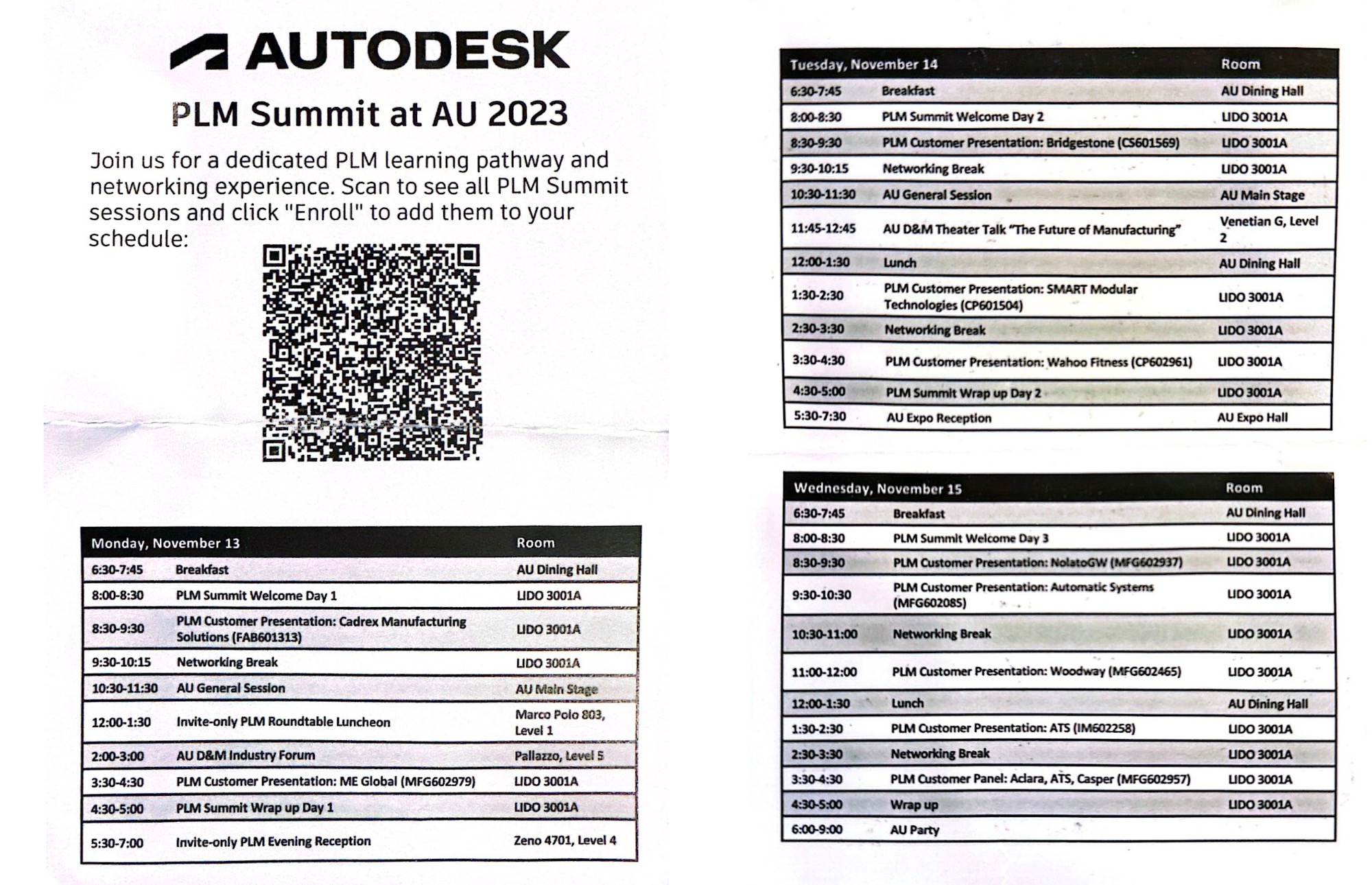
I’ve been following Autodesk Product Lifecycle Management (PLM) development for the last decade. Starting from early PLM360 product announcement at AU2011, through the acquisitions and adding Upchain and Prodsmart recently and finally at the last week PLM Summit at AU2023.
In my blog today, I want to share what I learned at PLM Summit at AU2023 about the last Autodesk PLM and also to share some of my thoughts about future Autodesk PLM development options and directions.
The Autodesk PLM History Perspective
Autodesk Cloud PLM is taking their roots from the acquisition of Toronto based Datastay back in 2011. Back in that time, Autodesk kicked off the idea of cloud and embarked into PLM journey. You can read my some of my articles from that time – My first take on Autodesk PLM360 product and technology. The strategy was to combine cloud based PLM360 that had no CAD data management option with on premise Autodesk Vault to manage CAD and engineering data.

Here is Autodesk Nexus announcement when the first Autodesk cloud PLM was presented.

Since that time, Autodesk took multiple steps to development and expand the PLM solution. The most recent one was the acquisition of another PLM software vendor (Upchain) for product data management (PDM). It was the answer to the question of cloud PDM and targeted to provide a strategic PDM solution to manage CAD files. Together it made Autodesk PLM solution combined with multiple products. You can check more about reasons for doing so and how it does fit together – How to navigate through multiple Autodesk PLM and PLM offering.

The obvious goal of this M&A was to solve the problem of CAD design data management (PDM). Check more about Upchain acquisition here.

You can see how the picture above combines multiple disciplines of document management, computer aided design (CAD), project lifecycle management, production process and project management. The big end goal for Autodesk was to combine all these technologies together using Autodesk Platform Services (formerly known as Autodesk Forge) for designing and building products and product’s lifecycle.

Let’s speak about what I learned at AU2023 during PLM summit.
Autodesk PLM 2023 Status Quo and Strategy
PLM summit at AU2023 was a set of dedicated sessions, including AU keynotes, meetings with Autodesk Data Management VP Derrek Copper, Director of Product Management (Jon Den Hartog) and many others, including partners and customers.
Let me start from a few slides I captured from customer presentations. I like these presentations because thy provides a good perspective on how Autodesk PLM supports overall product development process and product lifecycle, including production planning and supply chain management.
I captured these slides in the presentations done by Autodesk partners describing architecture combining data coming from multiple data sources and later one transferring data to reporting engine (using PowerBI)
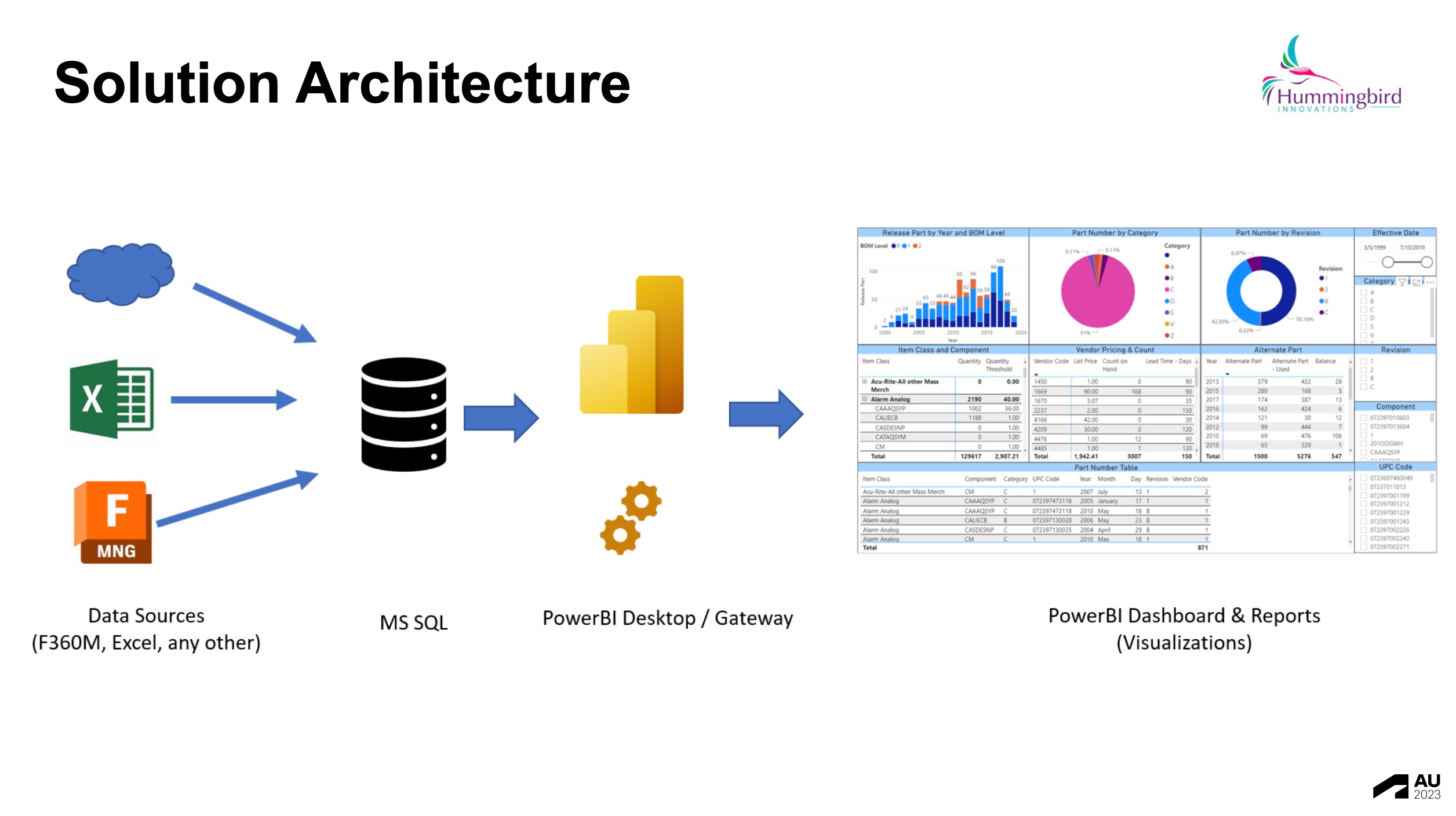
I found the following screenshot even more interesting describing how it all together combines existing products and implementing digital thread.
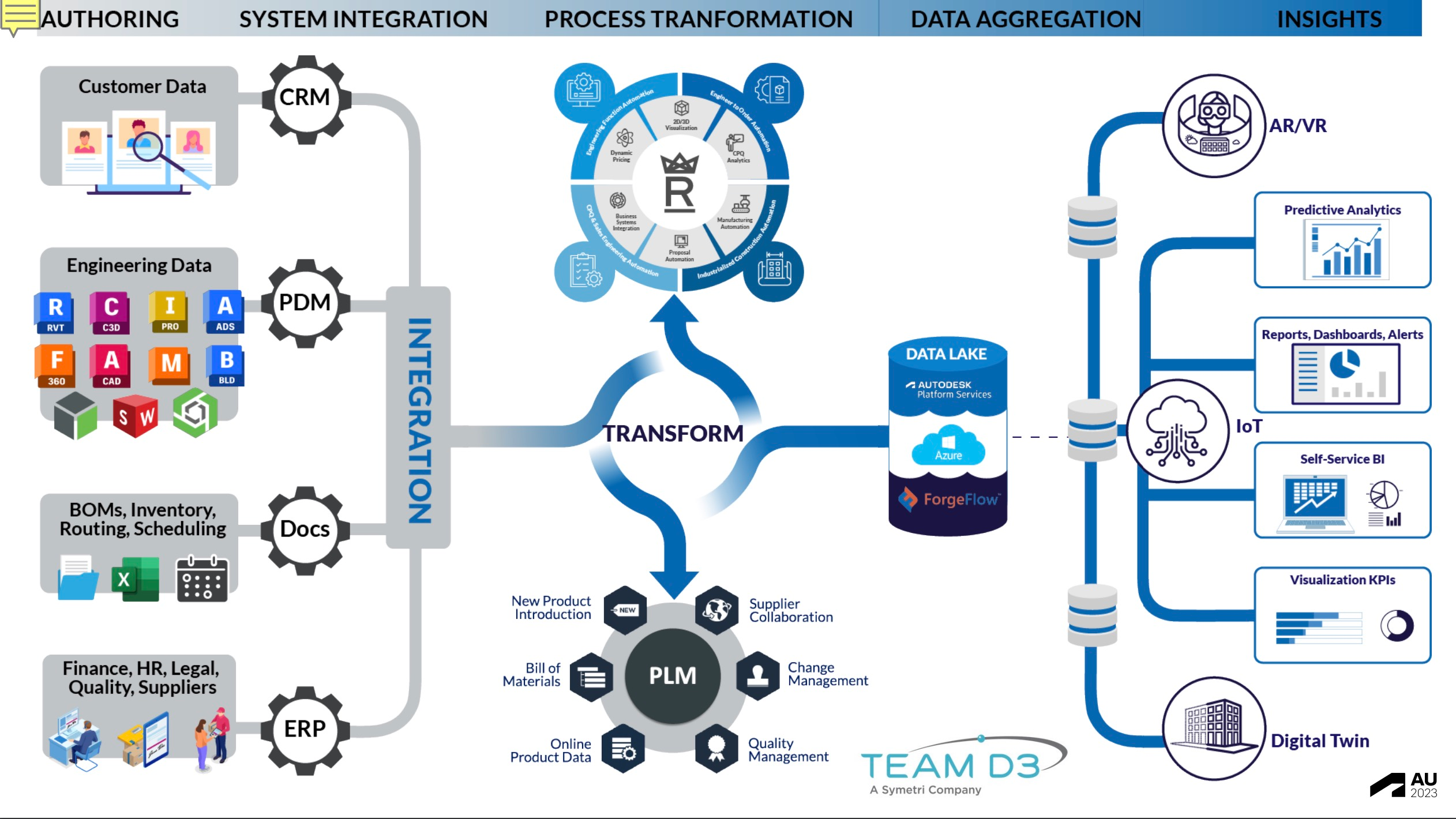
A bigger picture of Autodesk PLM is presented as well. Here is a few images that can help you to understand what is in Autodesk “PLM toolbox” now. You can see a modified big chart with names of the products now at the bottom.
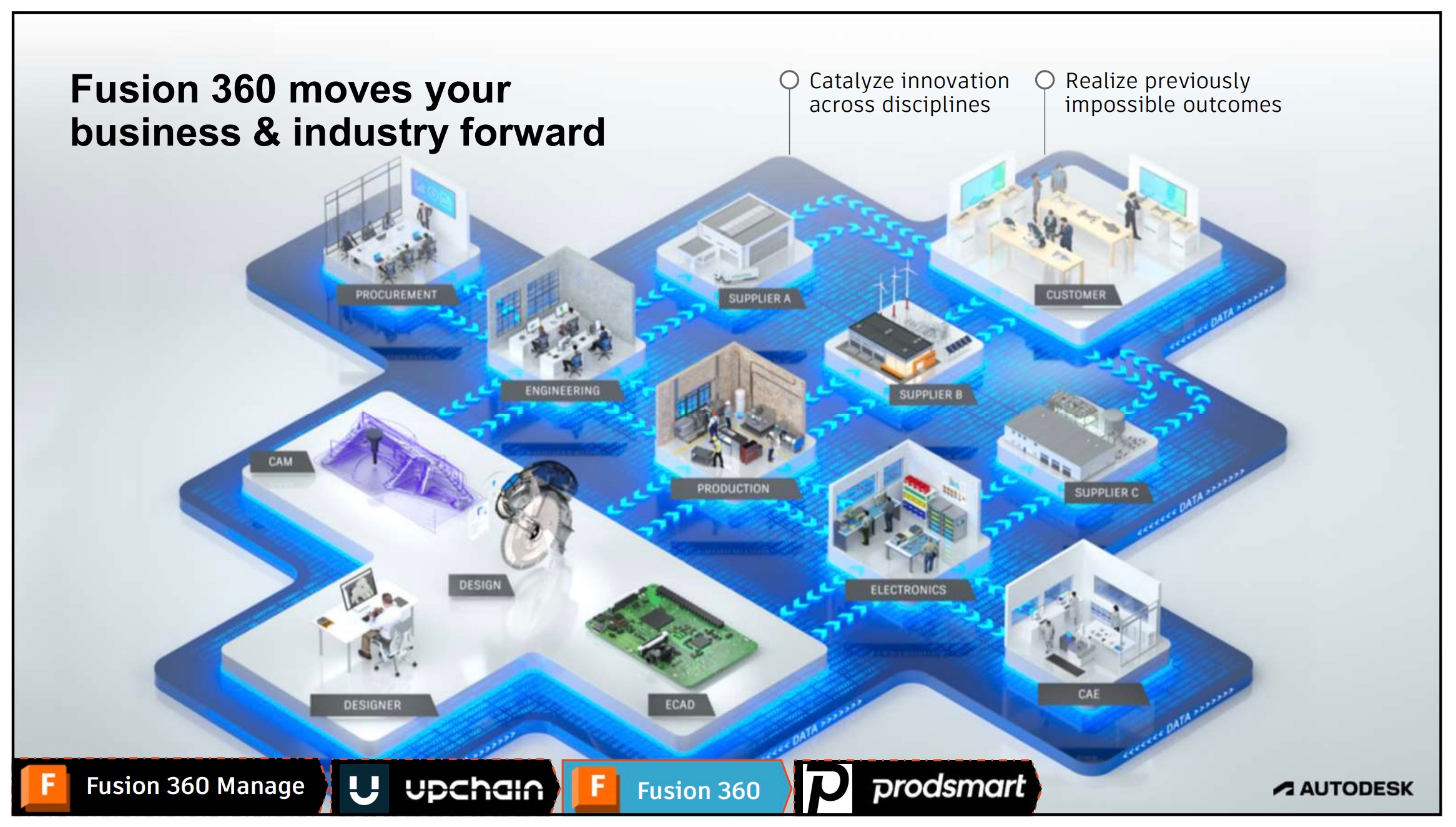
The picture above demonstrated a vision of platform consolidation, including product lifecycle, business processes and business strategy. A few more pictures to give you idea of Autodesk PLM vision.
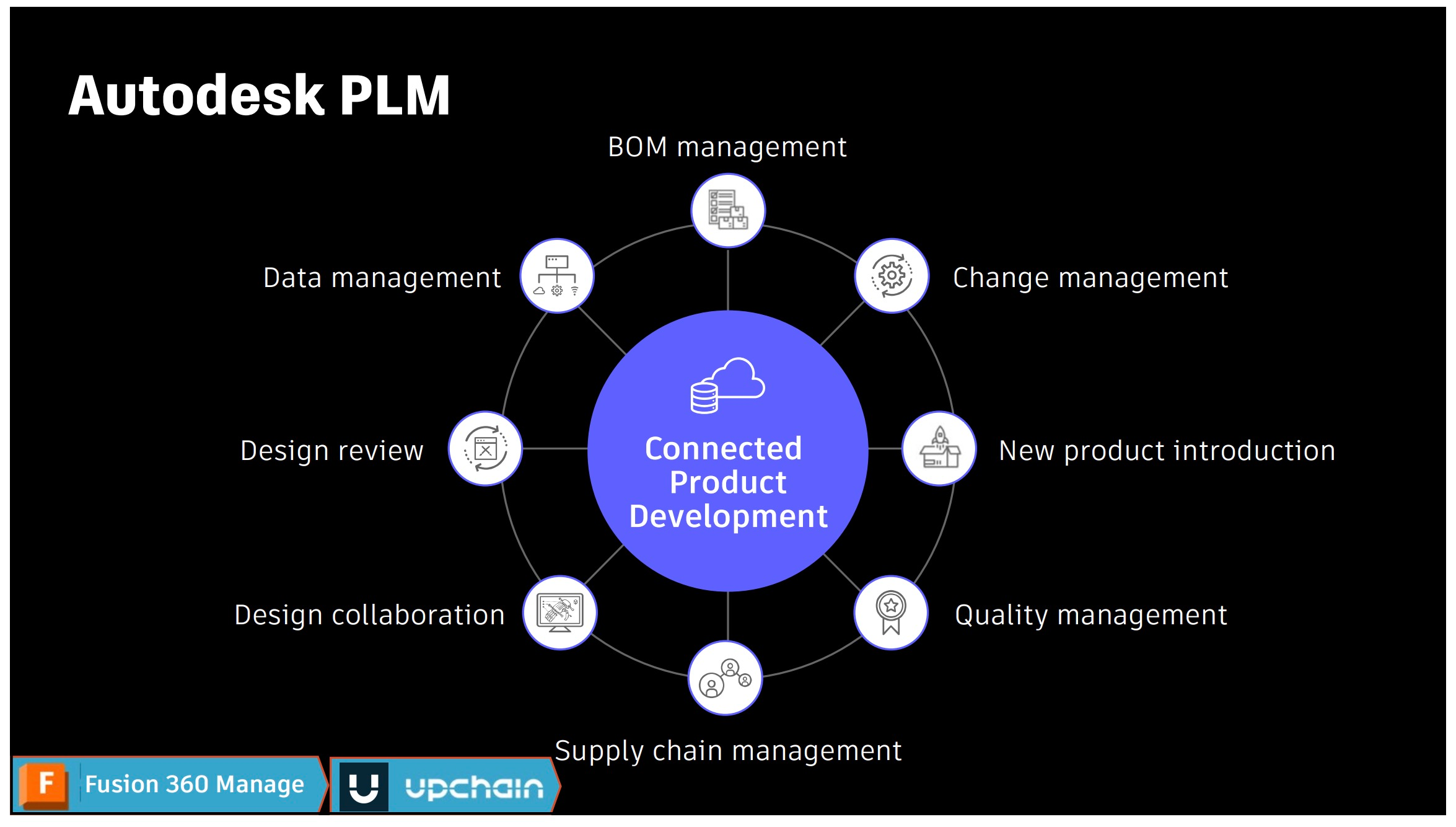
and detailed marketing architecture
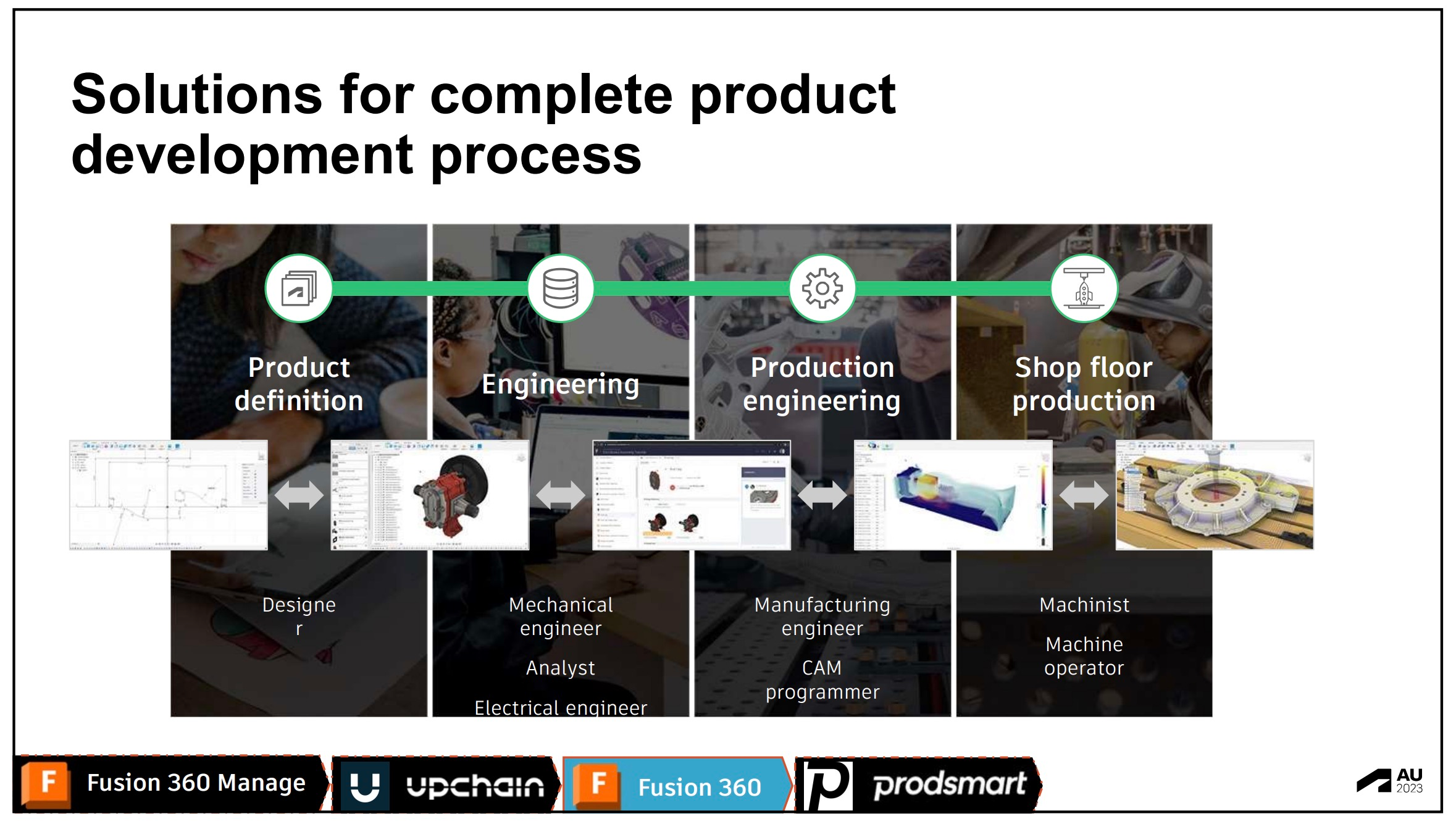
All together, you can see an evolution of Autodesk PLM strategy into much more sizable and combined form multiple solutions and services:
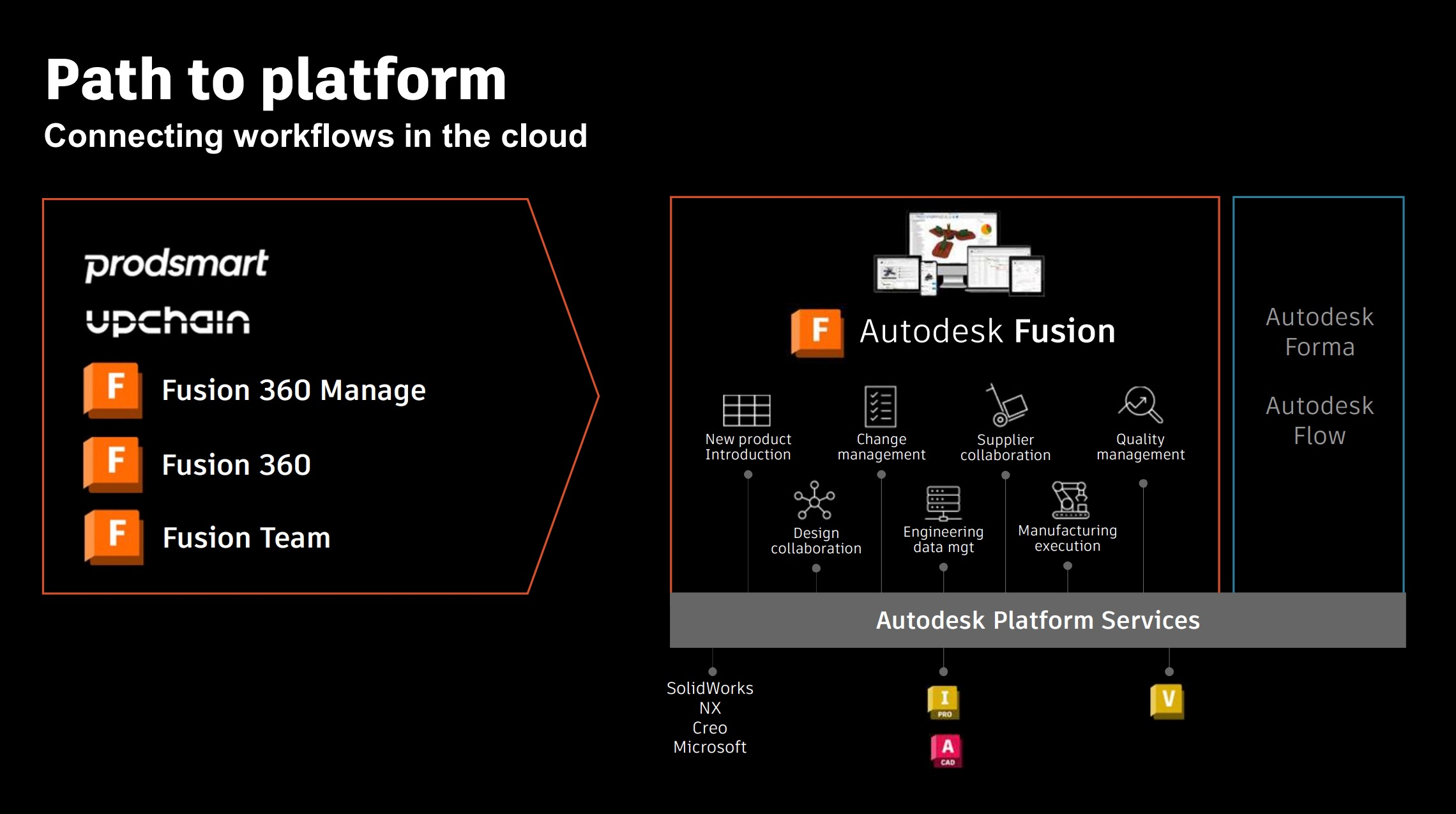
The picture above shows an important element of the strategy – Autodesk Platform Services and transformation from existing product to consolidated services. Before moving forward, I recommend you to read my comments about two AU 2023 keynotes:
AU2023: Design, Data Management and Manufacturing Industry Keynote
AU2023: Exploring the future of Autodesk Data Platform
How Autodesk Can Develop Future PLM Solution?
Watching customer presentations and Autodesk product lifecycle management sessions made me think about two main trends in Autodesk PLM solution development.
- Growing the strategic dominance of Autodesk Platform Services
- Aging of existing PLM products infrastructure and foundation.
Let me start from the existing products. All of them (Autodesk Vault, Autodesk Fusion360 Manage and Upchain) are using different data management foundations. Vault is on premise database and Fusion360 Manage multi-tenant service with single tenant database architecture.The solutions support current product functionality, but will require time and data management refactoring to converge into flagship Autodesk Platform Services to align with APS data models and especially MFG data model.
The future development of Autodesk Platform Service (APS) and the example of Fusion360 BOM shows how Autodesk can grow new solutions on top of APS. But these new solutions will overlap existing Fusion360 Manage capabilities. I don’t have enough information to analyze it more in details, but core Fusion360 Manage technology will require changes to become compatible with APS MFG model. At the same time, Upchain might become a future cloud PDM service on top of APS. This technology was recently acquired and promise to provide cloud multi-CAD PDM (file management solution).
According to Derrek Copper, VP of Data and Process Management, Autodesk is developing a new PLM software using APS Graph Data Model. This is strategically very strong move, but it means that the new solution might be incompatible with Fusion360 Manage (old Datastay platform). The scenario I describe will present the need for Autodesk to accelerate new PLM solution development and integrate Upchain to APS to support multi-CAD PDM. All together, I bet will leave Autodesk with urgent desire to develop new PLM solution faster.
What is my conclusion?
Autodesk is concluding 10 years from the time their first cloud PLM solution was introduced to the market. I can see some great customers and opportunity for modern cloud-native PLM solution from Autodesk. At the same time, introduction of Autodesk Platform Service and MFG Data API will trigger the need to bring a new PLM solution. As every new development, speed of brining new features and convergence from existing products to new capabilities is the biggest challenge. I can see some very promising future for Autodesk PLM combined with complexity of moving from old to new PLM solutions. Just my thoughts…
Best, Oleg
Disclaimer: I’m co-founder and CEO of OpenBOM developing a digital-thread platform with cloud-native PDM & PLM capabilities to manage product data lifecycle and connect manufacturers, construction companies, and their supply chain networks. My opinion can be unintentionally biased.











